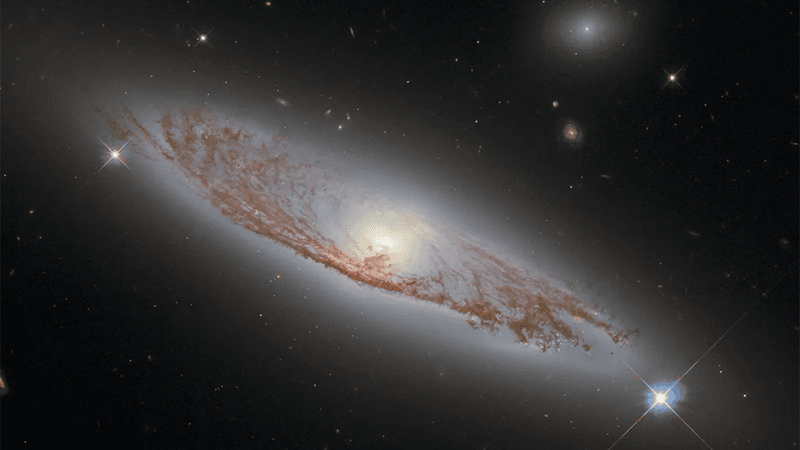The jets released by supermassive black holes are formidable. Some extend for millions of light-years and most have particles that move close to the speed of light with incredible energies – and it seems that might affect events completely unrelated to them such as novae eruption.
A nova is a temporary brightening of an old white dwarf. This aged stellar remnant steals material from a companion, accumulating hydrogen on its surface. Eventually, the hydrogen gets so hot that it explodes making the white dwarf dramatically brighter. The event doesn’t destroy the white dwarf and it often repeats over and over again.
Using the Hubble Space Telescope, astronomers looked at M87, a large elliptical galaxy. Its supermassive black hole, M87*, was the first black hole ever photographed – a behemoth that weighs 6.5 billion times the mass of the Sun. It is actively feeding, which leads to the emission of 3,000 light-year-long jets.
If you were on its path, you would be reduced to your constituent particles. However, the team did not expect that being near it might also have an effect. Near the jet, there are twice as many novae than elsewhere in this galaxy, which is located around 53 million light-years from us.
"We don't know what's going on, but it's just a very exciting finding," lead author Alec Lessing of Stanford University said in a statement. "This means there's something missing from our understanding of how black hole jets interact with their surroundings."

The findings suggest that either the presence of the jet leads to the formation of twice as many systems that can go nova or that the jets make the white dwarf go nova twice as fast. It is currently unclear which of the two is the correct scenario.
"There's something that the jet is doing to the star systems that wander into the surrounding neighbourhood. Maybe the jet somehow snowplows hydrogen fuel onto the white dwarfs, causing them to erupt more frequently," said Lessing. "But it's not clear that it's a physical pushing. It could be the effect of the pressure of the light emanating from the jet. When you deliver hydrogen faster, you get eruptions faster. Something might be doubling the mass transfer rate onto the white dwarfs near the jet."
Another idea the team considered is that the jet is heating the dwarf's companion, causing it to overflow further and dump more hydrogen onto the dwarf. However, they calculated that this heating is not nearly large enough to have this effect.
"We're not the first people who've said that it looks like there's more activity going on around the M87 jet," said co-investigator Michael Shara of the American Museum of Natural History in New York City. "But Hubble has shown this enhanced activity with far more examples and statistical significance than we ever had before."
The team observed 94 novae spread over about one-third of M87, with the majority of them happening around the jet. On average, there is a different nova going off in M87 every day. With hundreds of billions of galaxies in the universe, there are 1 million novae happening every second.
“We are witnessing an intriguing but puzzling phenomenon,” commented Chiara Circosta, a European Space Agency Research Fellow not involved in the study. Circosta studies the impact that accreting supermassive black holes have on the galaxies hosting them in the distant Universe.
“I was very surprised by this discovery. Such detailed observations of nearby galaxies are precious to expand our understanding of how jets interact with their host galaxies and potentially affect star formation”
A paper describing the results is accepted for publication in The Astrophysical Journal and is available on arXiv.


![An artist’s concept looks down into the core of the galaxy M87, which is just left of centre and appears as a large blue dot. A bright blue-white, narrow and linear jet of plasma transects the illustration from centre left to upper right. It begins at the source of the jet, the galaxy’s black hole, which is surrounded by a blue spiral of material. At lower right is a red giant star that is far from the black hole and close to the viewer. A bridge of glowing gas links the star to a smaller white dwarf star companion immediately to its left. Engorged with infalling hydrogen from the red giant star, the smaller star exploded in a blue-white flash, which looks like numerous diffraction spikes emitted in all directions. Thousands of stars are in the background.]](jpg/jet-m.jpg)


